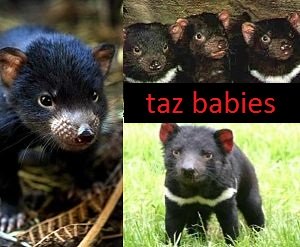Baby Sloth
 Portrait of a Baby Sloth
Portrait of a Baby SlothA cool baby sloth fact is that a baby sloth is able to cling to it's mother's fur within the first few moments of birth. Both two-toed and three-toed species of sloth have a very strong natural grip instinct that allows them to cling to their mother's back or belly as she moves through the trees.
The mother sloth gives birth to one pup after about 4 months of pregnancy. The baby is born fully furred, eyes open, and able to climb.
The pup clings to its mothers belly most of the first few months of life and begins to munch on leaves at about 2 months old.
It's mother may feed it leaves that it has partially chewed directly from her mouth to get things started.
A baby sloth will stay with it's mother for the first year or two of life, and then will move to it's own territory, usually just a tree or two away.

Sloths are small slow-moving animals that live in the trees of South and Central America. They are specially designed for life in trees, with huge, curved claws that allow them to grip branches.
Ligaments in the claws and limbs lock in place, and allow them to hang effortlessly while they eat or sleep, safe from many predators.
Sloths come in two and three-toed varieties, and are closely related to anteaters which have similar large, curved claws, but while anteaters are insectivores, and exist almost entirely on insects, sloths exist on a diet almost entirely of leaves.
The lack of grooming leads the sloths dense coat to actually grow algae during the rainy season, giving them a greenish tinge.
Their diet is so low in nutrients, that they have very low energy, and thus move very slowly. Their stomachs are filled with micro bacteria that help breakdown and eventually digest their food, but the process takes so long that a leaf consumed in August might not be eliminated until October.




a few more Baby Sloth facts

- The sloth is closely related to anteaters
- A baby sloth weighs about 10 ounces when born
- Baby sloths cling to their mothers fur
- They are born with fur, eyes open, and able to climb
- Sloths move at about 15 feet a minute
- They may live their entire lives in one tree
see more animal extreme closeups
Recent Articles
-
African Animals - Animal Facts Encyclopedia
Oct 11, 16 10:27 PM
African Animals facts photos and videos..Africa is a wonderland for animal lovers, and a schoolroom for anyone who wants to learn about nature, beauty and the rhythm of life -
Baboon Facts - Animal Facts Encyclopedia
Oct 11, 16 10:26 PM
Baboon facts, photos, videos and information - Baboons are very distinctive looking monkeys with long, dog-like snouts and close set eyes. -
Great Apes Facts - Animal Facts Encyclopedia
Oct 11, 16 10:25 PM
Great apes facts, photos and videos..Human beings did not evolve from chimpanzees, modern chimps and gorillas do not appear in the fossil records until much more recently than homo sapiens..























